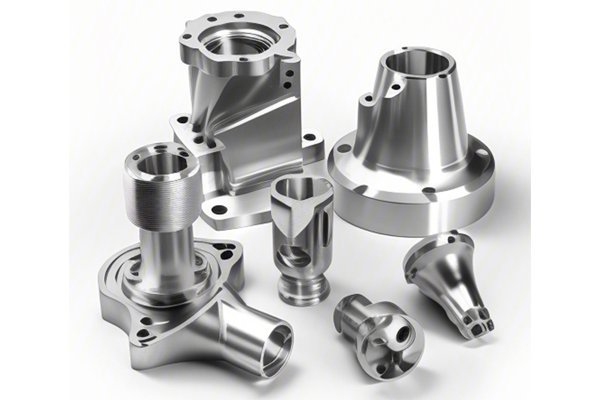Did you know that the global CNC machining market is expected to reach approximately $100 billion by 2025? This staggering statistic highlights not only the growth of the industry but also the increasing demand for precision-engineered components across a myriad of sectors, from aerospace to automotive, medical to consumer electronics. As businesses rush to capitalize on advancements in technology and manufacturing efficiency, understanding how to effectively request and evaluate a CNC machining quote becomes paramount.
In this comprehensive guide, we’ll explore the critical factors to consider when seeking a CNC machining quote, ensuring you receive the best value for your investment. From understanding machining processes to specifying materials and tolerances, every detail counts.
Computer Numerical Control (CNC) machining is a manufacturing process that utilizes computer software to control machine tools. CNC machines can operate with extreme precision, significantly reducing the margin for error and enhancing the overall quality of the final product. This technology comes in various forms—including turning, milling, and drilling—allowing for the production of complex and high-quality components with tight tolerances.
An accurate CNC machining quote is essential for budgeting and planning your project. A well-prepared quote provides transparency on the costs associated with production, materials, labor, and time. It helps to avoid any unforeseen expenses during the manufacturing process that could derail projects and lead to frustration.
As you delve into the world of CNC machining, understanding the intricacies of requesting a quote will position you to make informed decisions that can significantly impact the quality and cost of your parts.
Now that we’ve established the importance of a CNC machining quote, let’s dive deeper into the specific factors you should consider before making a request.
3.1 Type of Machining Required
Understanding the type of machining that aligns with your project requirements is vital. CNC machining encompasses various methods such as:
Choosing the right type of machining method can directly affect the quote since different processes carry their own production costs and timelines.
3.2 Material Selection
The material used plays a significant role in determining the overall cost and feasibility of machining. Popular CNC machining materials include stainless steel, aluminum, brass, plastics, and composites. Each material has its unique properties, machining characteristics, and associated costs:
Be sure to specify the exact material and characteristics needed for your components in the request.
3.3 Tolerances and Finishes
Precision machining demands strict adherence to tolerances and finishes. Clearly defining your requirements in this area is crucial. Consider the following when outlining tolerances and finishes:
The more precise you are about tolerances and finishes, the easier it will be for the supplier to provide an accurate quote.
3.4 Production Volume
The production volume can greatly influence both price and lead time. Clearly communicate the quantity of parts you need, whether it’s a prototype run or a large-scale production order. Here are some considerations:

Make sure to specify whether your needs might change over time—this could impact the contract terms and pricing.
3.5 Lead Time
Time is often as valuable as money, so you should always inquire about lead times in your CNC machining quote. The following conditions may affect this:
Clarifying project deadlines upfront will help ensure that you are aligned with the production schedule and can avoid costly delays.
3.6 Supplier’s Capabilities
Different suppliers possess varying levels of expertise and capabilities. Research the supplier’s capabilities to ensure they align with your project requirements. Consider:
A supplier with a proven track record in your niche can provide additional insights and innovations, enhancing the quality and feasibility of your project.
3.7 Quality Assurance
Quality cannot be compromised, especially in precision machining. When requesting a CNC machining quote, inquire about the supplier’s quality control processes to guarantee that your parts meet industry standards:
Asking these questions can ensure that the supplier takes quality seriously and that you will receive components that meet your specifications.
3.8 Cost Efficiency
While it’s tempting to go with the lowest quote, you must also consider other factors that contribute to cost efficiency:
Assessing total cost rather than just upfront pricing will give you a clearer picture of what you’re truly paying for.
3.9 Support Services
Lastly, consider any support services that the supplier may offer beyond just manufacturing components. This can include:
Having a supplier that can support you through each stage of the manufacturing process can make a significant difference in your project’s efficiency and success.
When seeking CNC machining quotes, several common pitfalls could cost you time and money:
By being mindful of these errors, you can streamline the quoting process and foster a positive partnership with your suppliers.
In conclusion, requesting a CNC machining quote for precision parts is a task that should not be taken lightly. By considering the factors outlined in this guide—including the type of machining required, material selection, tolerances, production volume, lead time, and supplier capabilities—you can position yourself to receive an accurate and fair quote.
Understanding these critical components not only elevates the quality of your final product but also enhances your relationship with suppliers, ultimately benefiting your bottom line. As the CNC machining industry continues to grow, staying informed and proactive about your quoting process is essential.
Remember, the effort you put into requesting a quotation will pay off immensely when it comes to achieving the best results for your projects. Embracing these techniques will not only save you time and resources but also solidify your reputation as a reliable and knowledgeable partner in your industry.
As you move forward with your projects, reflecting on these insights will keep you ahead of the curve and ensure that you’re making the best choices in the ever-evolving landscape of CNC machining.






